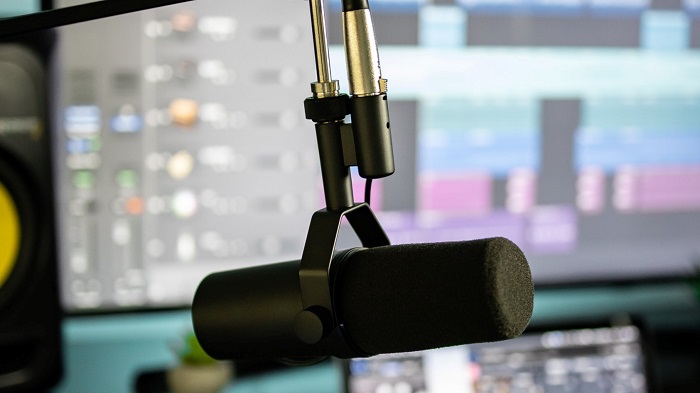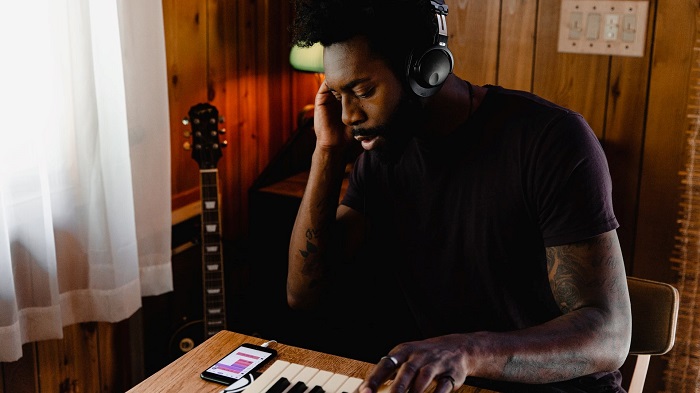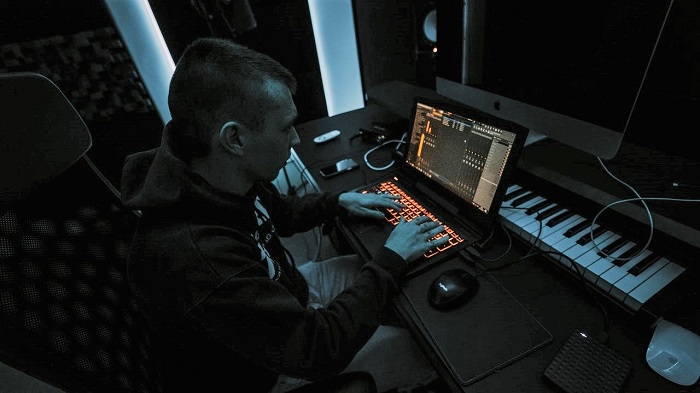We can, for the most part, admit that completing your daily tasks, whether it be assignments or filling out paperwork, can be tedious and boring. To compensate for your bland routine, what do you do? You listen to music to spice things up a bit.
What better genre to add to your life’s background soundtrack than lo-fi music? Featuring an anime girl writing in her journal and sometimes a hippy raccoon wearing a yellow hoodie, lo-fi has somewhat become the official genre of productivity.
If you haven’t already jumped on the lo-fi bandwagon and are feeling a bit lost, stick around. Ahead lies a deeper look into the makings and development of the so-called ‘chill’ genre.
Lo-fi in a Nutshell
Lo-fi, technically speaking, is described as low-quality audio production, contrary to hi-fi. Nonetheless, it bloomed into something much bigger; a whole genre and culture.
Touted for bringing a sense of belonging and nostalgic feel into its listeners, lo-fi has become the soundtrack of several people’s working and study sessions.
A History of Lo-fi
Back in the day, lo-fi music had a different term: ‘low-fidelity music.’ In the 1950s, saying ‘lo-fi’ was popularized.
The inspiration behind lo-fi lies within its ease of production. The commercial availability of the equipment needed for making lo-fi has drawn music lovers to create their own beats without breaking the bank.
The 1960s saw emerging band names, such as The Beach Boys, using mediocre band equipment. The 1980s were more comfortable with lo-fi and didn’t necessarily describe it as low-quality or low-fidelity music. It was mostly described as a DIY genre.
As you can tell, lo-fi isn’t affixed to only one genre, rather it created concoctions of countless other genres, like hip-hop lo-fi and jazz lo-fi.
Modern Lo-fi

In the 2010s, the entrance of modern lo-fi began in none other than the live-streaming giant, YouTube. Nonetheless, we can’t talk about lo-fi without mentioning the one who started it all, Jun Seba.
Famously known as Nujabes, Jun Seba is a Japanese hip-hop producer. He pioneered the cross between hip hop and lo-fi, bringing boom-bap and his Chillhop into the scene.
What propelled him into worldwide fame was his involvement in the soundtrack for the anime TV series, Samurai Champloo.
The ambiance he mastered in that soundtrack created an aesthetic that became highly sought after. It mixed traditional Japanese music with some contemporary hip-hop and graffiti beats.
That’s when lo-fi hip hop emerged. His interpretation has inspired several music artists like Joey BadA$$, among others, to freestyle their lo-fi tracks.
Characteristics of Lo-fi Music
You might be wondering, what makes lo-fi music what it is? Well, it all comes down to its distinguished and unconventional characteristics. They mainly include:
- Repetitive loop. This mainly comes in the form of drum loops. To capture some authenticity, the beats are usually recorded live and sampled. With 70-80 beats per minute, the rhythm of lo-fi music can range from low to mid-tempo.
- Sampling. This element is essential to lo-fi. It ties everything together by blending those static, low-frequency hisses to give you the perfect trip down memory lane. You may find yourself listening to some cafe background noises or rainfall to instill that lo-fi ambiance most fans look for.
- Jazzy components. Adding a jazzy component to lo-fi incorporates a more relaxed feel to every beat. The integration of the jazz genre draws in a more diverse audience into the mix. Jazz chords deepen lo-fi melodies and bring a meditative quality through their lo-fi blend.
- Universality. Lo-fi can be characterized as universal. You, among millions of other listeners, can feel the nostalgia coursing through the music. Everyone has their own nostalgic interpretations, after all.

It’s no surprise that millennials might favor the VHS static and old move clip sound effects. The younger generation also feels a certain preference for the past, evidently because of the slower pace.
Why Listen to Lo-fi?
Working quietly can be uninspiring at times. You might not be a fan of working with any music playing in the background, especially music with vocals.
What if it’s the music’s characteristics that put you off? It could be too upbeat to listen to while completing your assignment.
Lo-fi music delivers an ideal ambiance for productivity. It won’t distract you because it’s not too interesting. The low-tempo beats aren’t too fast or slow, making them the perfect addition to your study session.
Here are a few other reasons why you should listen to lo-fi music:
Heightening Brain Activity
Have you ever repetitively watched a TV show? It could be because you felt a sense of comfort in knowing what comes next. Lo-fi music capitalizes on this very concept. It won’t startle you with any high pitches. It’s, like the TV show you’ve watched on repeat, predictable.
Subconsciously, these drum loops increase your brain level activity, specifically in your frontal lobe. This, in turn, provides you with a great deal of concentration.
Positive Mood

Whenever you’re listening to a slow rhythm or tempo, it automatically gives off the happy hormone, serotonin. Lo-fi can also release dopamine, which is responsible for your mood elevation and motivation.
Lo-fi music can also work to lessen your cortisol level, which is good news if you’re prone to anxiety. As you can tell, lo-fi not only gives you some background music to vibe to but emotional support as well. This is why it’s perfect for playing while studying and working
You can refer to the process as putting yourself in an aural cocoon, shunning you away from any of life’s many intrusions.
How to Make Your Own Lo-fi Music
When you think of music production, a sound-proof room with a fancy mic, mixer, and monitors might come to mind. This isn’t the case with producing lo-fi music, though.
Lo-fi music doesn’t need to be complex. On the contrary, it thrives on dysfunction. Lo-fi music precedes monetary motivations and looks towards creativity and imagination.
Commercial music artists are most often burdened by the grips of their labels and the trend trajectory they need to follow to stay relevant. Lo-fi isn’t that high-maintenance. Anyone can make their special beat without having to follow fad rules.
You can mix other genres with your lo-fi tempos. Rock, hip-hop, punk, jazz, and metal are a few of the lo-fi branches you can find. Your inspiration doesn’t need to be only genre-based. Several lo-fi melodies are based on TV shows. For instance, take a look at Avatar: The Last Airbender’s famous lo-fi remix.
Steps to Get You Started on Your Lo-fi Track

Making your own lo-fi track can be a rewarding experience. The process is very relaxing and it allows you to unleash your creativity.
That said, here are a few basic steps to help you create your own lo-fi music:
Step 1: Prepare Your Music Equipment
Lo-fi music doesn’t require fancy equipment. The first tool you’re going to need is a digital music production software.
While producing a lo-fi beat, sampling is one of your most critical priorities. Your new sampling best friend will be Digital Audio Workstation. You can download other programs like Ableton and FL Studios.
Step 2: Start Sampling
It’s time to find your beat and record it. If you’re going to add vocals to your track, we suggest getting a USB microphone.
Note that the use of the microphone doesn’t need to be limited to vocals.
You can record yourself playing an instrument while using it to capture the lo-fi vibe. If you’re wondering what sort of rhythm you can add, hip-hop beats, jazz chord progressions, or drum loops are some of your choices.
The sampled instruments you pick can also liven your track. Most lo-fi music relies on jazz instruments, such as drums, bass, guitar, etc. You don’t have to stick to one instrument throughout your track.
If you’re looking for a little more pizzazz, feel free to add some saxophone, harmonica, trumpets, harps, or even trombone.
Step 3: Find Your Beat

The flow of your lo-fi beat can make or break your track. You typically want to keep your beats at a range of 70-100 BPM. You can detect your track’s BPM through your music software’s metronome settings.
Whenever you listen to a lo-fi track’s drumbeat, you’ll probably notice how low-quality it sounds. That’s what you should aim for. The older your drumbeat sample, the better and more retro it’ll sound.
Try to make sure the drum beats mesh well with your samples and other instruments. Cohesiveness will provide your track with a smoother flow.
Step 4: Establish Your Bass Line
Blending in a bass line will jazz up your lo-fi beat. Your bass line’s tempo can begin at the same level as your root chord. Afterward, you can syncopate your bass line by diversifying your rhythm. In lo-fi music, you need to sometimes be off-beat. It truly helps define the genre.
Step 5: Get Creative with Your Beats
Always keep in mind when creating your lo-fi music that being perfect is not the goal. That being so, you can add distortions, vinyl scratches, crackly effects, or tape saturation to your beat.
You can also add in bits of sidechaining. You’ve probably heard it a lot, sometimes without noticing it. Sidechaining occurs when a sound is affected by the frequency of another sound. The sounds are compressed, rather than ducked.
Apart from musical tone additions, you can add some natural components. People murmuring in the background, birds chirping, wind chimes, or just some city noises.
Step 6: Wrap It Up

Once you’ve got all your components set up and mixed together, it won’t sound exactly how you want it to just yet. You’ll want to finish off with some adjusting, equalizing, and cutting.
Prioritizing the beats works best in this step. Your snare and kick should be your primary concern. This’ll ensure you’ll get a steady rhythm in your beat. You can then start to check your other chord progressions and sound effects.
All in all, this step doesn’t need to take up much of your time. It’s all about balancing your volumes and frequencies to grab for that lo-fi aesthetic.
The Connection Between Anime and Lo-fi
Remember when we talked about Nujabes’ soundtrack feature in that anime, Samurai Champloo? Well, this brings us to a significant point in the lo-fi aesthetic.
Anime and lo-fi have always blended together so well. You might even consider the anime girl listening on her headphones and writing in her journal the mascot of the lo-fi movement. Nujabes’ soundtrack brought more than just auditory creativity, but visual ones as well.
Plus, it’s hard not to love these cute anime characters that accompany you while you work or study.
Popular Lo-fi Artists and Accounts
Since this genre has brought many together, several accounts and artists have emerged to showcase their musical talent.
Here are a few noteworthy names that we recommend you go ahead and check out:
- Powfu: The artist is known for his lo-fi hip-hop jams. His most well-known hit, which you may have heard already (if not, you really should), is ‘Death Bed (Coffee For Your Head). His lo-fi style is credited as DIY bedroom-esque.

- Chillhop Music: While surfing YouTube for lo-fi music, you’ve probably come across an account with a picture of a raccoon wearing a yellow hoodie with oversized headphones. That account would belong to the Netherland-based account known as Chillhop Music, delivering unique lo-fi music that emphasizes long jazz samples and actual instruments rather than loops.
- Lofi Girl: This account is one of the most highly viewed in the lo-fi sphere, with over nine million subscribers. The account is currently bringing in more than one billion views! Lofi Girl’s hip-hop beats have become a staple among students completing their work.







